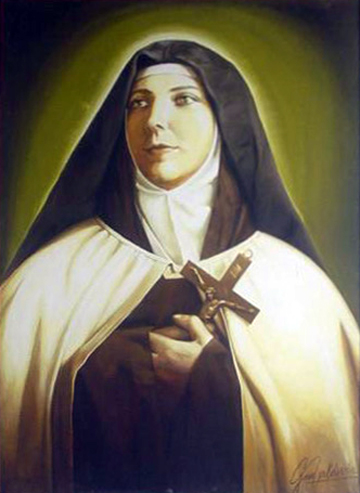Misyon Online - July-August 2013
Pulong ng Editor
WYD Rio 2103 – Trailer
World Youth Day takes place in Rio de Janeiro, Brazil, 23 to 28 July


Hiking home during the ‘Hunger Season’
By Mercy Gawason
My name is Mercy Gawason. I grew up in the mountainous Zamboanga peninsula of northwest Mindanao in the Philippines which is the homeland of the Subanen people. My parents are farmers. My older sister Marilyn and older brother Rolly, are married and are also farmers. My three younger brothers Arnolfo, Jeyar, and Jomar are still at school.

Recently our Subanen Crafts Project acquired a small point-and-shoot camera. With this I can now take you on a photo journey up the trails and rivers to my mountain home, and then, through my pictures, I can more easily explain how the Subanen Crafts Project has helped my family and our farm.

It’s the small things that matter
By Fr G. Chris Saenz
The author is from the USA and was ordained in 2000. Part of his preparation for the priesthood was in the Philippines. He is currently Rector of the Latin America Formation Program of the Columbans in Chile and Peru and lives in Santiago, Chile.
The ‘small things”, as St Thérèse, the Little Flower would say, are an important aspect of spirituality and mission. But don’t get a romantic notion of what that means or how it looks. Often the small things can be a nuisance, an inconvenience and a pain in the neck. That is the moment we have to be alert to whatGodis teaching us through these small things. I learned such some years ago when I worked in southern Chile.
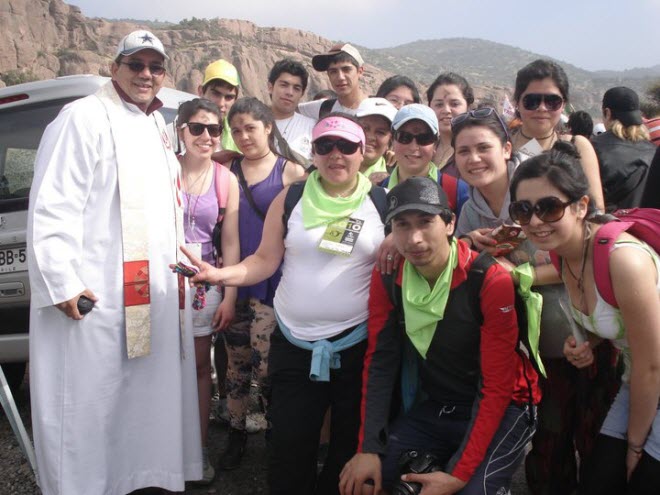
I was living in the rural countryside populated by the Mapuche, who are indigenous to parts of Chile and Argentina. One day, after visitations and meetings, I arrived home late, tired and hungry. With a cup of tea Isat downtowatch the local news. Suddenly there was a knock on my door. What! Who can that be! My mind raced thus, completely upset by the intrusion. I opened the door to see Kata, a Columban lay missionary from Fiji who lived next door. ‘Sorry to disturb you’, she apologized, probably seeingdiscontent on my face. ‘There is a woman here to see you. She’s in our house.’ I told the Kata that I’dbe there. With a huff and a puff I changed my clothes and went over. It was unusual for someone, especially a woman, to be out at this hour. I was surprised to discover that there were two women waiting for me, onebeing Maria who lived quite far away. They greeted me.
We from North America and Europe valuebeing direct,‘getting to the point’,-so as notto ‘waste time’. However, in Chilebeing direct is not a value. It is considered rude. The women began with the usual general questions of how was I doing, my family, my health, etc. Having beenin Chile for several years I was accustomed to this, but that night it was torture. I begrudgingly participated. After about 30 minutes the women finally got to the point. Maria explained that after shopping in the large city, two hours away by bus,they had arrived back herelate and she had missedthe last bus to her area.

A Call to Serve through Columban Mission
By Delia Hynson-Jagonia
 My life is about serving the people. I worked with non-governmental organizations (NGOs), with the Church through a social action center, with the Columbans in Columban Lay Missionaries - Philippines (CLM-P) and Subanen Crafts. I was trained by the Columban Sisters in Immaculate Conception College (ICC), now La Salle University, Ozamiz City, where I studied. I had a good job, worked abroad and in Manila and visited different countries but later chose to go back to Ozamiz to be with my mother. The impact of the Columbans in my life started in the 1980s with Fr Peter Leonard who conducted a live-in five-week training program on lay leadership.
My life is about serving the people. I worked with non-governmental organizations (NGOs), with the Church through a social action center, with the Columbans in Columban Lay Missionaries - Philippines (CLM-P) and Subanen Crafts. I was trained by the Columban Sisters in Immaculate Conception College (ICC), now La Salle University, Ozamiz City, where I studied. I had a good job, worked abroad and in Manila and visited different countries but later chose to go back to Ozamiz to be with my mother. The impact of the Columbans in my life started in the 1980s with Fr Peter Leonard who conducted a live-in five-week training program on lay leadership.
Fr Vinnie Busch invited me to be part of the staff of CLM-P in Ozamiz. He was the full-time coordinator there but worked part-time in Subanen Crafts as part of the Mission and Art Ministry. I did not see myself as being called to be a Columban Lay Missionary, as I had come home to care for my mother. But I opted to be a CLM-P staff member in 1999. I was to receive the teams assigned to Mindanao and to help prepare lay missionaries for assignment abroad. I accompanied them for exposure in areas in Mindanao. Being with CLM-P, I was to journey with the lay missionaries, to be there at times when they needed a friend, to be a staff memberready to accommodate their concerns.
When I started working with Father Vinnie I became interested in his creation spirituality, the blending of his artistic works in drawing and creating mandalas. I didn’t have an opportunity to express my artistic talents but was in awe when I met Father Vinnie. While I was happy working with CLM-P, half of my body and soul was with Subanen Crafts. So I was inspired to dedicate myself to art and in 2006 resigned from CLM-P to work full-time with Subanen Crafts.

PH21 – Team in Orientation 2013-2014
The three members of PH21, the 21st group of Columban Lay Missionaries from the Philippines began their nine-month orientation program on 3 June. They are staying in St Columban’s Lay Mission Center, 34 Rosario Drive, Cubao, 111 Quezon City. Here are profiles of the three.
PH21 (L to R): Jenanydel, Luda and Ivy May
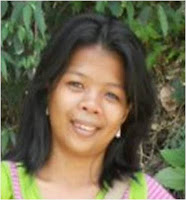 Jenanydel Nola, 24, from the T’Boli Tribe of Maitum,Sarangani Province. Del, second of eight children, is a graduate inEconomics of Notre Dame University of Dadiangas. From June 2010 to March 2012 she worked at StMarcellinDaycareCenter, established in their place for the T’bolis through the generosity of her grandfather, Malico Nola. After two years as a day care worker, she was given a new assignment as a self-help facilitator with the tribal women’s group, under the supervision of the Marist Brothers and Sisters (Notre Dame Business Resource Center). Aside from being a teacher and a community facilitator, Del has also worked as a researcher and was appointed Parent Leader of the PantawidPamilyang Pilipino Program in her area.
Jenanydel Nola, 24, from the T’Boli Tribe of Maitum,Sarangani Province. Del, second of eight children, is a graduate inEconomics of Notre Dame University of Dadiangas. From June 2010 to March 2012 she worked at StMarcellinDaycareCenter, established in their place for the T’bolis through the generosity of her grandfather, Malico Nola. After two years as a day care worker, she was given a new assignment as a self-help facilitator with the tribal women’s group, under the supervision of the Marist Brothers and Sisters (Notre Dame Business Resource Center). Aside from being a teacher and a community facilitator, Del has also worked as a researcher and was appointed Parent Leader of the PantawidPamilyang Pilipino Program in her area.

Fr Joseph Panabang SVD
1. We were passing by Osobeng Waterfalls, Asesewa, Ghana, which hurtle hundreds of feet into the depths below. Everyone wanted to stop to view such a majestic and beautiful scene. While with the altar boys now enraptured by the sight I remarked, ‘What a nice place to throw down misbehaving altar boys’. They stared anxiously at each other.


‘To say that you kill in the name of God is blasphemy’
‘The Lord created us in His image and likeness, and we are the image of the Lord, and He does good and all of us have this commandment at heart: do good and do not do evil. All of us. “But, Father, this is not Catholic! He cannot do good.” Yes, he can. He must. Not can: must! Because he has this commandment within him. Instead, this “closing off” that imagines that those outside, everyone, cannot do good is a wall that leads to war and also to what some people throughout history have conceived of: killing in the name of God. That we can kill in the name of God. And that, simply, is blasphemy. To say that you can kill in the name of God is blasphemy. (Pope Francis, homily, 22 May 2013.)

 The Day I Bargained with God
The Day I Bargained with God
By Grace Christine Bañez
When I was reviewing for the nursing board examination in 1993 I felt so unprepared that tension started to build up in my system. My friends and I went to church almost every day. We prayed the rosary and all the novenas which we believed would help us to pass and overcome all the challenges that would come our way.
Mind you, my scores in our practice tests barely reached 70 per cent, so how could I expect to pass the board with its passing rate of 75 per cent? I’d heard some of my friends phoning their parents, expressing their anxiety. Some of the parents told their children to just do their best and that they would support them no matter what the result might be. That made my friends feel less tense but for me it was a different picture. When I called my Mom to tell her about my scores, she pleadingly told me that I had to pass the board exam since, if I failed, we didn’t have much money to spend. She was building a house at the time.

Pulong ng Editor
WYD Rio 2103 – Trailer
World Youth Day takes place in Rio de Janeiro, Brazil, 23 to 28 July
Father Joeker

By Fr Joseph Panabang SVD
Fr Joseph Panabang SVD
1. We were passing by Osobeng Waterfalls, Asesewa, Ghana, which hurtle hundreds of feet into the depths below. Everyone wanted to stop to view such a majestic and beautiful scene. While with the altar boys now enraptured by the sight I remarked, ‘What a nice place to throw down misbehaving altar boys’. They stared anxiously at each other.

2. I was trekking to one of our far-flung villages. Deep in the bush and in the middle of a one-way road, a mini-truck was parked. After half an hour waiting, I was getting impatient. Taking out my breviary, I began praying until I was disturbed by a man asking, ‘Who is that stupid driver blocking the road?’ I flared up. ‘I am the one’, I said. But the man showed no sign at all of being offended, insulted or even peeved. Closing my prayer book, I looked up exclaiming, ‘So, Lord, this is what you mean by “if they throw stones at you, throw them bread”?’

3. We noticed our hens didn’t want to lay their eggs in the baskets we had prepared for them. The parish priest Fr Mietek Sagan SVD from Poland, suggested we put one ping-pong ball in each basket to deceive them. It worked. But the color of one ping-pong ball was no longer immaculately white after being ‘incubated’ twice.

4. ‘Give to Caesar what belongs to Caesar and to God what belongs to God’ was the text that Sunday in Asesewa, Ghana. ‘Tettey in Krobo’ is a popular name that means ‘first-born male’. ‘Mawu’ is the word for God. Trying to localize the text, I said, ‘Give to Tettey what belongs to Tettey and to Mawu what belongs to Mawu’. After Mass I overheard some of the faithful saying, ‘Father Joe was talking about Fr John Tumawu SVD from Ghana’.

Peace By Peace
‘To say that you kill in the name of God is blasphemy’
‘The Lord created us in His image and likeness, and we are the image of the Lord, and He does good and all of us have this commandment at heart: do good and do not do evil. All of us. “But, Father, this is not Catholic! He cannot do good.” Yes, he can. He must. Not can: must! Because he has this commandment within him. Instead, this “closing off” that imagines that those outside, everyone, cannot do good is a wall that leads to war and also to what some people throughout history have conceived of: killing in the name of God. That we can kill in the name of God. And that, simply, is blasphemy. To say that you can kill in the name of God is blasphemy. (Pope Francis, homily, 22 May 2013.)
+++
 The Sacrifice of Isaac , Caravaggio,, c.1598
The Sacrifice of Isaac , Caravaggio,, c.1598
The Command to Sacrifice Isaac (Genesis 22:1-19, New Revised Standard Version, Catholic Edition)
After these things God tested Abraham. He said to him, “Abraham!” And he said, “Here I am.” He said, “Take your son, your only son Isaac, whom you love, and go to the land of Moriah, and offer him there as a burnt offering on one of the mountains that I shall show you.” So Abraham rose early in the morning, saddled his donkey, and took two of his young men with him, and his son Isaac; he cut the wood for the burnt offering, and set out and went to the place in the distance that God had shown him. On the third day Abraham looked up and saw the place far away. Then Abraham said to his young men, “Stay here with the donkey; the boy and I will go over there; we will worship, and then we will come back to you.” Abraham took the wood of the burnt offering and laid it on his son Isaac, and he himself carried the fire and the knife. So the two of them walked on together. Isaac said to his father Abraham, “Father!” And he said, “Here I am, my son.” He said, “The fire and the wood are here, but where is the lamb for a burnt offering?” Abraham said, “God himself will provide the lamb for a burnt offering, my son.” So the two of them walked on together.
When they came to the place that God had shown him, Abraham built an altar there and laid the wood in order. He bound his son Isaac, and laid him on the altar, on top of the wood. Then Abraham reached out his hand and took the knife to kill his son. But the angel of the Lord called to him from heaven, and said, “Abraham, Abraham!” And he said, “Here I am.” He said, “Do not lay your hand on the boy or do anything to him; for now I know that you fear God, since you have not withheld your son, your only son, from me.” And Abraham looked up and saw a ram, caught in a thicket by its horns. Abraham went and took the ram and offered it up as a burnt offering instead of his son. So Abraham called that place “The Lord will provide” as it is said to this day, “On the mount of the Lord it shall be provided.”
The angel of the Lord called to Abraham a second time from heaven, and said, “By myself I have sworn, says the Lord: Because you have done this, and have not withheld your son, your only son, I will indeed bless you, and I will make your offspring as numerous as the stars of heaven and as the sand that is on the seashore. And your offspring shall possess the gate of their enemies, and by your offspring shall all the nations of the earth gain blessing for themselves, because you have obeyed my voice.” So Abraham returned to his young men, and they arose and went together to Beer-sheba; and Abraham lived at Beer-sheba.
English poet Wilfred Owen, killed in action at the age of 25 on 4 November 1918 a week before the end of the Great War – his mother got the telegram informing her of his death as the church bells pealed to announce the Armistice – sees ‘Abraham’, the political leaders of the day, msking a different choice:
The Parable of the Old Man and the Young
+++ Collect O God, who shows a father’s care for all, 
Wounded German and British soldiers – ‘enemies’ – in 1916
Our Lady of Peace and Good Voyage /The Virgin of Antipolo
(NuestraSeñora de la Paz y BuenViaje)Mass for the Preservation of Peace and Justice
grant, in your mercy,
that the members of the human race,
to whom you have given a single origin,
may form in peace a single family
and always be united by a fraternal spirit.
Through our Lord Jesus Christ, your Son,
who lives and reigns with you in the unity of the Holy Spirit,
one God, for ever and ever.
Your Turn
 The Day I Bargained with God
The Day I Bargained with God
By Grace Christine Bañez
When I was reviewing for the nursing board examination in 1993 I felt so unprepared that tension started to build up in my system. My friends and I went to church almost every day. We prayed the rosary and all the novenas which we believed would help us to pass and overcome all the challenges that would come our way.
Mind you, my scores in our practice tests barely reached 70 per cent, so how could I expect to pass the board with its passing rate of 75 per cent? I’d heard some of my friends phoning their parents, expressing their anxiety. Some of the parents told their children to just do their best and that they would support them no matter what the result might be. That made my friends feel less tense but for me it was a different picture. When I called my Mom to tell her about my scores, she pleadingly told me that I had to pass the board exam since, if I failed, we didn’t have much money to spend. She was building a house at the time.
I felt so tense and pressured. Why couldn’t my Mom be like other parents? Maybe because she was a single parent, having been widowed at 23, and was also spending for my brother’s education, on top of meeting all the family’s basic needs. Poor Mom! I loved her so much that I didn’t want to fail her. I lifted up everything to God.
At USC Retreat House, Talamban, Cebu City
My relationship with God at that time was so open. I could easily communicate to Him my thoughts, feelings and ambitions. It was really my dream to become a nurse and go abroad to help my Mom with the family’s expenditures. But it was just a dream, and I didn’t know if it would ever come true. I came to the point of bargaining with God, offering Him one very hard sacrifice if only He would give me and my batch mates the grace to pass the board.
Until now I can still picture the funny expression on God’s face as He asked, ‘And what would that be?’ I couldn’t think of anything at that moment, but after several days, as I was riding in a jeepney, I spotted a nun walking. It was then I remembered my promise to God. Without batting an eyelid I told God in my heart that becoming a nun would be the answer. I firmly believed that if I became a nun, God would still look after my mother and brother, as He had been doing for a very long time. And the ‘deal’ was closed.
We took the board and the result was incredible. Everyone in our batch had passed. Some were even among the Top Twenty or ‘Placers’. It was a 100 per cent blessing with 100 per cent effort. Some of our group had done their review at the University of San Carlos (USC), Cebu City, where we had graduated, others at another review center. We praised God for His glory!
It was after we passed the board that the hiring of nurses in the USA slowed down. Some were able go abroad, but for a fee, which was way too expensive for most of us.
After receiving the board exam result, I worked as a clinical instructor, first in my hometown, Ozamiz City, and then in USC. I loved my work and to the best of my ability tried to impart knowledge and positive values to my students. I totally forgot my promise to God. Thanks a lot, God! You blessed me by enabling me to become a licensed nurse by the age of 20.
It was in my mid-20s that I remembered that promise. I felt guilty and called my Mom, asking for her permission to join a search-in, to gauge myself if I am for that vocation . . . but my Mom told me that I was her only daughter and she opposed the idea of my becoming a nun. She didn’t even agree to any search-in activities.
That night I dreamt about a very big house. It seemed old but well-tended. I found myself walking up the staircase to the second floor where I saw a very big door. I opened it and saw a beautiful little angel floating in the air. The angel placed his right index finger on his lips indicating that I should be silent. There was only one bed in the room in which a father and his baby son were sleeping, the father’s arms wrapped protectively around the baby, who seemed to be a few months old, lying comfortably on his Dad’s tummy.
I wondered who these people were, since I couldn’t see their faces. The angel gestured, inviting me to look outside through the very large window. I could hear birds singing joyfully and see the sun beginning to rise. Looking down, I saw trees and a single bench on which I could see Jesus in His fluorescent, white robes. Tears were running down my face. It was a wonderful feeling to look at Jesus. It seemed that all the things that had lain heavily on my shoulders had been lifted. It was a very light feeling, seeing Jesus simply looking at me with the most beautiful smile I had ever seen.
At this point in my dream, I looked at the father and son sleeping lovingly and at the face of Jesus. He didn’t utter a word but His face spoke a magnitude of the understanding that only He can have.
He is a loving God, and He relays that no matter what vocation we choose, in which we can always serve Him; and where we are happy, He is always there to support us. I love you Jesus and I always believe in You.
Author’s comment:
May we be able to recognize God’s goodness in everything around us and may we remember the blessings that He continuously pours out on each of us, our family, friends, career and endeavors. May we be able to repay God’s goodness through the little things that we do each day.
In our vocation as nurses, may we be able to manifest God’s goodness by serving our patients with unequalled dedication, wherever we are on the globe.
Now, I am married to the love of my life, and we have a wonderful son. Do you think this is a coincidence? Maybe. But I believe it is God’s work of love.
A Call to Serve through Columban Mission
By Delia Hynson-Jagonia
 My life is about serving the people. I worked with non-governmental organizations (NGOs), with the Church through a social action center, with the Columbans in Columban Lay Missionaries - Philippines (CLM-P) and Subanen Crafts. I was trained by the Columban Sisters in Immaculate Conception College (ICC), now La Salle University, Ozamiz City, where I studied. I had a good job, worked abroad and in Manila and visited different countries but later chose to go back to Ozamiz to be with my mother. The impact of the Columbans in my life started in the 1980s with Fr Peter Leonard who conducted a live-in five-week training program on lay leadership.
My life is about serving the people. I worked with non-governmental organizations (NGOs), with the Church through a social action center, with the Columbans in Columban Lay Missionaries - Philippines (CLM-P) and Subanen Crafts. I was trained by the Columban Sisters in Immaculate Conception College (ICC), now La Salle University, Ozamiz City, where I studied. I had a good job, worked abroad and in Manila and visited different countries but later chose to go back to Ozamiz to be with my mother. The impact of the Columbans in my life started in the 1980s with Fr Peter Leonard who conducted a live-in five-week training program on lay leadership.
Fr Vinnie Busch invited me to be part of the staff of CLM-P in Ozamiz. He was the full-time coordinator there but worked part-time in Subanen Crafts as part of the Mission and Art Ministry. I did not see myself as being called to be a Columban Lay Missionary, as I had come home to care for my mother. But I opted to be a CLM-P staff member in 1999. I was to receive the teams assigned to Mindanao and to help prepare lay missionaries for assignment abroad. I accompanied them for exposure in areas in Mindanao. Being with CLM-P, I was to journey with the lay missionaries, to be there at times when they needed a friend, to be a staff memberready to accommodate their concerns.
When I started working with Father Vinnie I became interested in his creation spirituality, the blending of his artistic works in drawing and creating mandalas. I didn’t have an opportunity to express my artistic talents but was in awe when I met Father Vinnie. While I was happy working with CLM-P, half of my body and soul was with Subanen Crafts. So I was inspired to dedicate myself to art and in 2006 resigned from CLM-P to work full-time with Subanen Crafts.
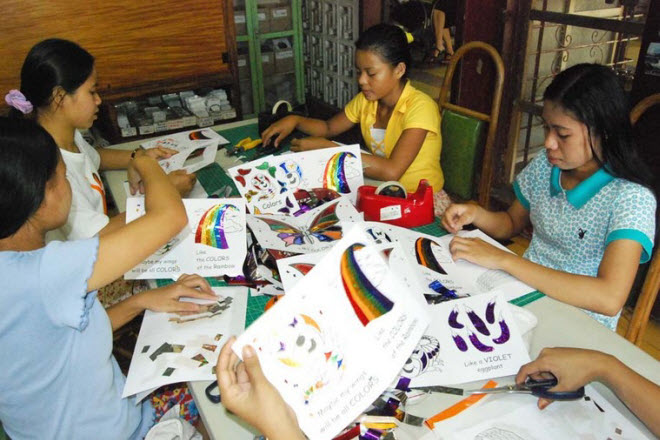
This wasn’t that easy as I had to deal with the pain of adjustment and acceptance. My life had been different before, being surrounded with professionals. My training was in big systems dealing with production, influenced by German precision. But suddenly I had to deal with young Subanens who hadn’t able to finish their schooling. I had to understand their culture, their being young and to recognize our generation gap.
And the Subanens had to adjust to city life. So we made sure that the women in the center were well treated so that they could fulfill their dream. We offered them scholarships so that they wouldn’t be oppressed by others. Some opted not to continue their studies due to difficulties in adjusting.
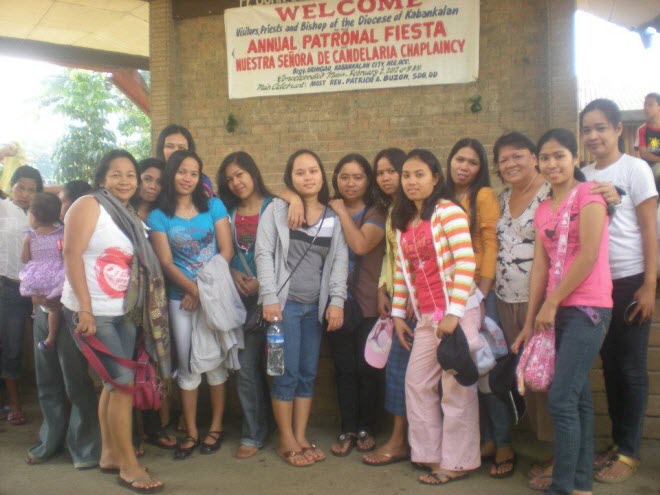
The Subanen weavers are very artistic. Look at how they work! But they have a culture of their own, such as marrying at an early age of 18 to 20. We wanted to expose them to a wider view of the world. So every month we went out for a meal, brought them to different places and provided training to develop their skills.
Because it was business at the same time, we had to work in order to earn our salary. We had to market our products. Father Vinnie emphasized that what we were doing was already a vocation. So I believed I was called to that vocation.
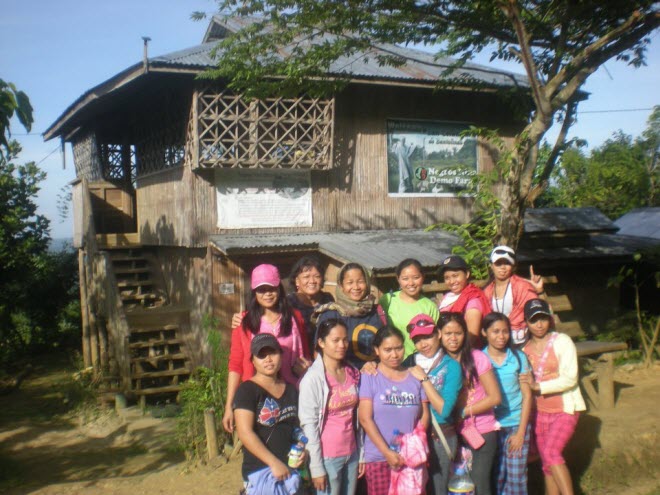
I am thankful that I was also called to be part of the Columban mission, specifically with CLM-P and Subanen Crafts; to be part of their mission in life, to be a support in whatever way I could serve. I am thankful that God brought me to this. I could have been on a different path but God called me to be part of CLM-P and Subanen Crafts. When tough times come, ‘I know God you brought me here because I can make it.’
But God surprised me by leading me to another path. I found my love, Walter, a classmate from way back in high school, and we were married in July 2012. After serving Subanen Crafts, I had to retire in December 2012 to give time for my family. I am now a simple housewife and I’m enjoying the rest as I had been working straight for 37 years without a break.Neither of us has a salaried job as we opted to work on our farm. But it is not a big deal for at our age we do not need a lot in life.
May God who calls each of us in a special way accompany us until we find the fulfillment of the desire of our hearts.
A Close Encounter with the Columbans in the Third World
By Fr Jovito Dales
Father Jovito shares how his childhood wonder at the ‘huge house inhabited by white strangers’ in Ozamiz City led him ultimately to leave a good job in the bank and become a Columban priest in Peru. He is now back in the Philippines as vocation director. He will be very happy to hear from any young man interested in following his footsteps at seladmj@yahoo.com
‘I pray especially for you to have the gifts of the Spirit of Discernment and the Spirit of Mission.’ That was the prayer of Columban Fr Desmond Hartford when he confirmed me in January 1997 in the chapel of the Carmelite Sisters, Marawi City, Lanao del Sur. After finding no proof of my confirmation Monsignor Des, then Apostolic Administrator of the Prelature of Marawi, suggested that I be confirmed there. He looked for my baptismal godparents, whom I had never met. He eventually found them and brought them to the ceremony. That was an unforgettable event precisely because I was born and baptized in Marawi City in 1969, but grew up in Catadman, Ozamiz City, when we left the war-torn place in 1972.
Encounter with the White Strangers
My first encounter with the Columbans was during my elementary years. Going to school I passed by a huge house inhabited by white strangers. We called it ‘Ang Palasyo’, ‘The Palace’, as it was the biggest house in town. Those passing by were curious about the overwhelmingly big house, about those white men what they were they doing in our place. Their towering height seemed threatening to little kids like me. But I was not afraid of them because they were very nice. They tried to speak and ask questions in Bisaya, and would even laugh as they were corrected. I learned that they were missionary priests and that Ang Palasyo was the central house of the Columban Fathers in Ozamiz City. Most of the Columbans I met in Mindanao were people-oriented, lived a simple lifestyle, were very down to earth and courageous, and chose to stay despite the danger – things that captivated me as I was silently discerning my vocation.
The desire to be like them gradually grew. I wanted to enter the seminary after college but my mother got very ill. After finishing my degree in Commerce, majoring in Accounting, in 1990 I looked for a job to help my family. Fortunately, I found one in a bank where I worked for more than six years.
While working, an opportunity for reconnecting with the Columbans came when Fr Frank Baragry invited me to join a retreat-giving team. He became my regular spiritual companion. I had the opportunity to meet more Columbans during weekend recollections, retreats and some Columban gatherings. I also got to see the inside of the Palasyo. It was truly big with high ceilings and oversized beds, at least for me! Not built for Pinoys! In the mirror of the comfort room (rest room), I could only see the tip of my head! It was very amusing.
More Inspiring Encounters
I came to know the late Fr Patrick Steen when he invited us to give a recollection to his parishioners in Sinacaban, Misamis Occidental. People-oriented, he would always wear his contagious smile going to mountain communities.
While working in the bank, I happened to meet Fr John Hickey whose simplicity and gentleness were very evident. I appreciated him more when I visited his parish in Dinas, Zamboanga del Sur, with the retreat group. A veterinarian, he had many pets such as rabbits and goats around the place During the retreat some parishioners shared about their experience with an occult group called Tadtad, known to kill people they were suspicious of by cutting off parts of their bodies. Traumatized, some were crying and shaking in fear. Despite the danger in that area Father John chose to stay.
‘If I were to be a Columban like him, would I be able to remain calm and passionate in my ministry in the midst of danger?’ I asked myself.
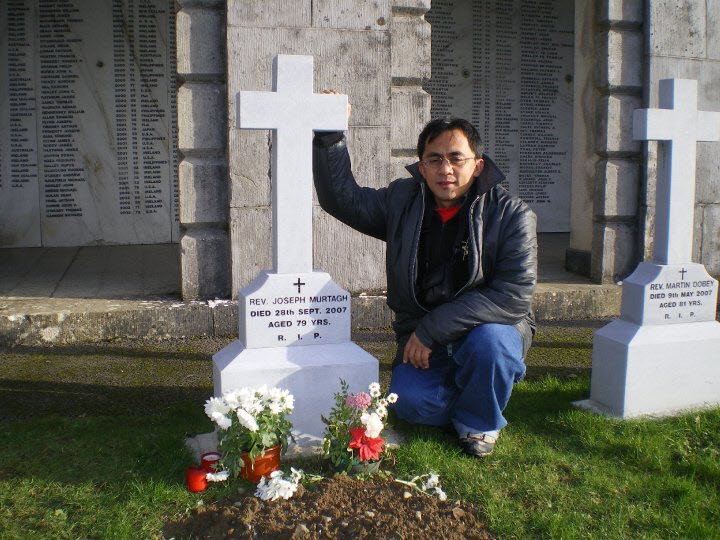
Fr Vito at Fr Murtagh's graveyard.
The late Fr Joe Murtagh was another who inspired me. You would never know the suffering he was going through because he was always smiling. I learned that he had a very painful form of Multiple Sclerosis (MS) but he didn’t complain. The person who told me said that he could be seen at night walking to-and-fro in the lobby of the Palasyo to make the pain bearable. When I was in Chicago in 1998 he faxed me a hand-written letter that I keep as a remembrance of someone who showed great dedication and courage in the midst of suffering.
Knowing each of them, meeting them in different places and circumstances enabled me to reflect more on my calling. These encounters gave me the opportunity to know the white people in the Palasyo better and what they were into. During my formation years, when I sometimes found things difficult and could hardly understand what was happening, they helped me find meaning in what I was doing. They really touched me profoundly.
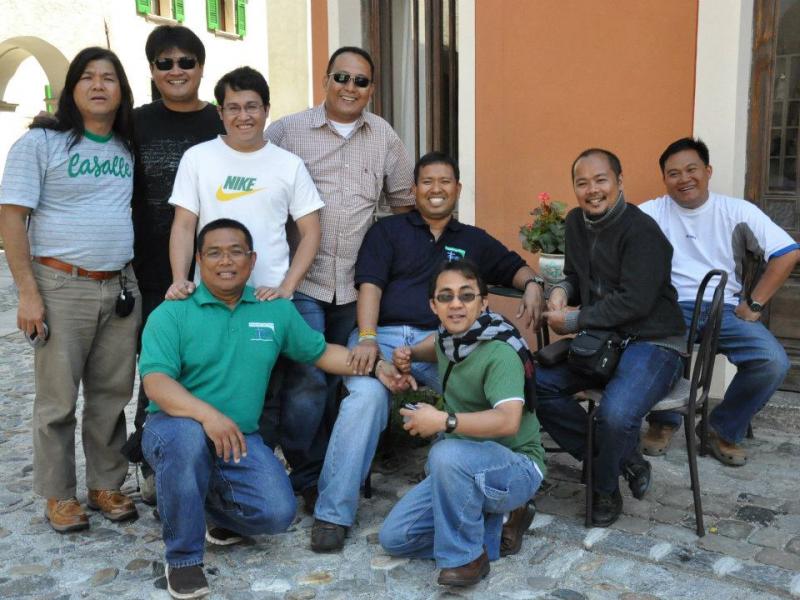
Filipino Columban Fathers
Becoming a Columban
I joined the Columbans in June 1997. The following year, with the opening of our International Theologate in Chicago, I was sent to the United States for theological studies. In 2002 I left for Bolivia for five months for an intensive course in Spanish language and then proceeded to Peru for my First Missionary Assignment (FMA). I had a meaningful experience in Peru with an interruption in 2003 when my father died.
The Columbans are family-orientated. The fact that I was able to come home for my Dad’s funeral made me even more appreciative of them. I finished my theology in 2005. The following years until my priestly ordination were spent in the Columban parish of Our Lady of Remedies, Malate, Manila. I was ordained deacon there in 2006. It was there that I learned more about poverty in my own country.
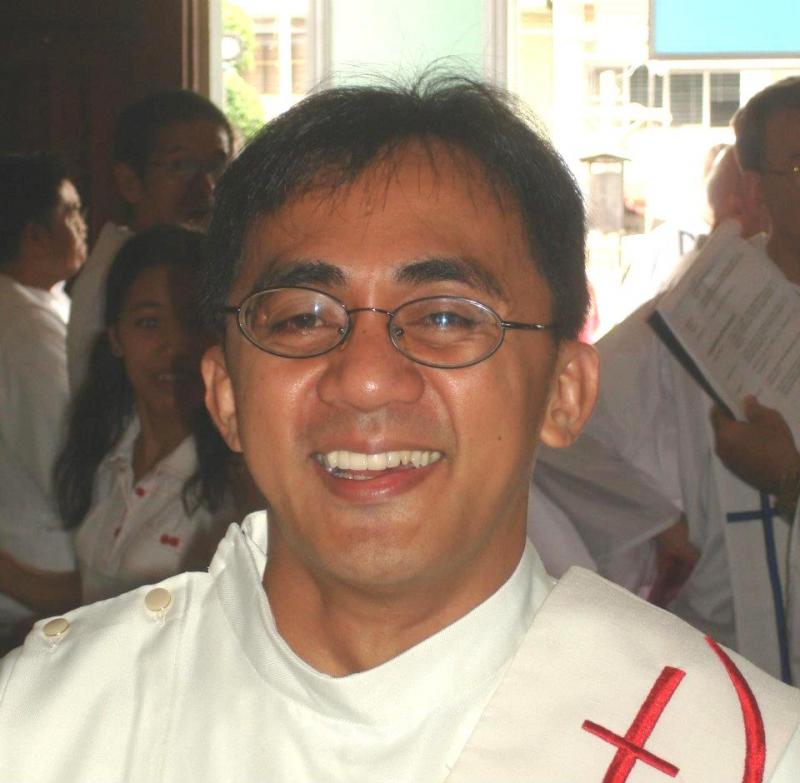
One day I asked Fr John Leydon, the parish priest, to allow me to immerse myself for a few days with some sidewalk vendors around the church. I accompanied the family of Ate Evelyn in selling cigarettes, candies, and coffee at nighttime. She was the mother of four children. Her husband was a tricycle driver. Ate Evelyn had to sell from 8pm to 4am the following day. Arriving home she still had to do some household chores before taking a few hours sleep and begin her daily routine as a mother. The first night with them in the street was exciting. However, when I had my sleep from 4 am to 8 am, I wasn’t able to get up because of dizziness. I could imagine the lack of rest that Ate Evelyn had to go through. Sadly, her earnings sometimes weren’t even enough for her family’s daily needs. It was through her and the other street vendors that the line in the Our Father truly came alive: ‘Give us this day our daily bread!’ They struggled to put food on the table every day. Now, every time I pray those words I remember Ate Evelyn, her family and others who have to struggle every day to find food.
I was ordained as a priest on 4 January 2007 at Immaculate Conception Cathedral, Ozamiz City, by Archbishop Jesus A. Dosado CM and worked in Agusan Parish in Cagayan de Oro City for one year with Fr Dick Pankratz, the parish priest. I was back in Peru from 2008 until 2011. I found the Peruvians still warm, friendly and vibrant as they engaged in mission with sincerity, dedication, and profound faith. I surely experienced the highs and lows in mission life in Peru. However, I left there with so much gratitude in my heart, as expressed wonderfully in the famous line from a Spanish song: ‘Gracias a la vida que me ha dado tanto’ (Thanks to life, which has given me so much!).
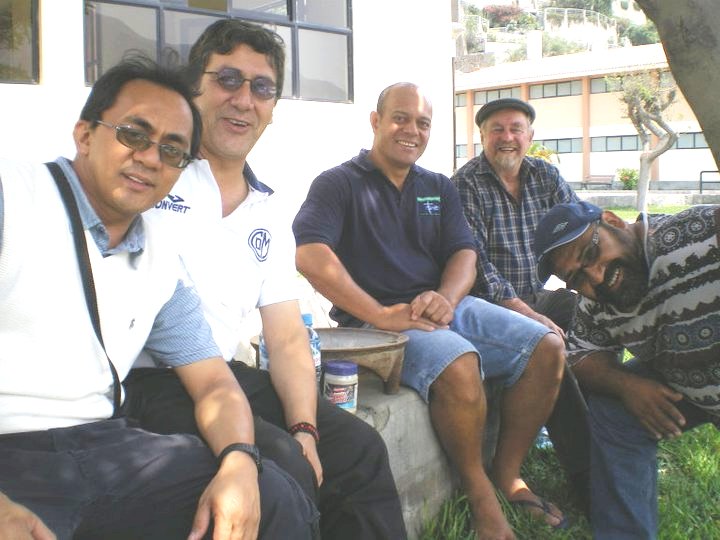
With the Columban Fathers in Peru
Being into different places broadened my perspective of ‘me and others’. I become more appreciative of my own culture as I learned to be more accepting of others. A common thing among Columbans is that we work with the underprivileged to somehow bring to them the Christ that each one knows; and much of what I know of Christ has been through my dealings with the people. A give-and-take process, indeed.
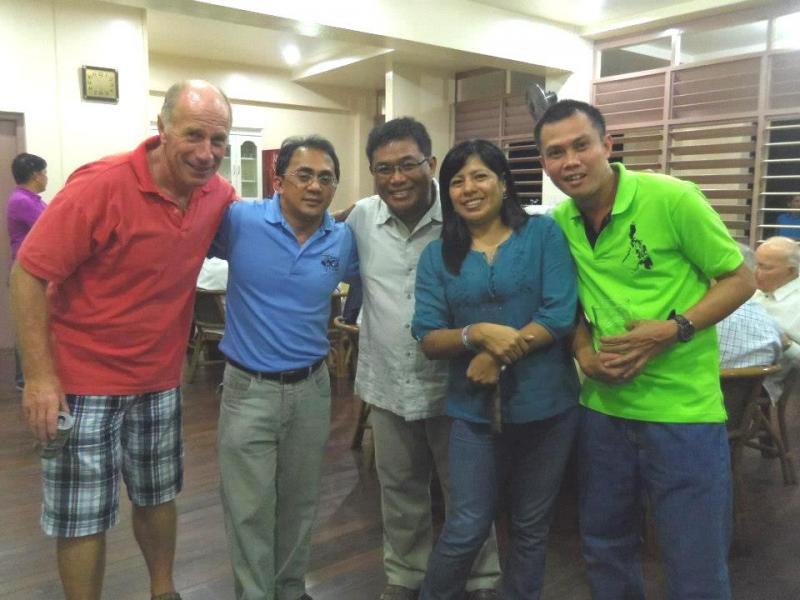
Vocation Director
Now I am working with the Vocation Ministry in the Philippines since June 2012. It is challenging as I feel like a fisherman without knowing where to fish. I have to depend on the previous coordinators’ insights. I try to listen to their experiences and at the same time evaluate them from my own experience. The interesting part of the job is that it reorients me to my own culture as I go to parts of the Philippines I’ve never been before. I am learning to appreciate the diversity of Filipino dialects and languages, and learning more deeply the struggles of the people, particularly of the Ate Evelyns in my country. I am glad of the opportunities to talk with groups about the Columbans and our missions. I have become hopeful for there are young men who inquire about the possibility of joining us. As they express their interest in what makes up their lives, I am reminded of my own vocation story.
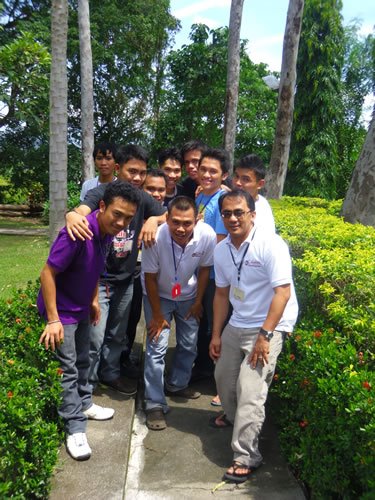 Fr Jovito, Bernie Durangparang and some searchers after a vocation recollection.
Fr Jovito, Bernie Durangparang and some searchers after a vocation recollection.
Now more than ever I find the prayer of Fr Des Hartford even more appealing. I pray for those two gifts especially as a vocation director. The gift of the Spirit of Discernment: to help each inquirer listen to and respond to his own calling. And the gift of the Spirit of Mission: submission to the work itself.
I see my role the way I see mission. This is not my mission but God’s mission, one that is full of frustrations for it is bound by its limitations. But it is also filled with joy for it provides me with the opportunity to meet people from all walks of life whose faith is, at times, stronger than mine. I believe that with the two beautiful gifts I’m praying for, I am also growing in faith and trust in the One who calls.
Canto para la Lima de Hoy (A Song for the Lima of Today)
Sung by Columban Fr Diego Rojas Cabrera, ‘Padre Diego’
Mercedes Sosa Gracias a La Vida
Gracias a la Vida que me ha dado tanto
me dio dos luceros que cuando los abro
perfecto distingo lo negro del blanco
y en el alto cielo su fondo estrellado
y en las multitudes el hombre que yo amo.
Gracias a la vida, que me ha dado tanto
me ha dado el oido que en todo su ancho
graba noche y dia grillos y canarios
martillos, turbinas, ladridos, chubascos
y la voz tan tierna de mi bien amado.
Gracias a la Vida que me ha dado tanto
me ha dado el sonido y el abedecedario
con él las palabras que pienso y declaro
madre amigo hermano y luz alumbrando,
la ruta del alma del que estoy amando.
Gracias a la Vida que me ha dado tanto
me ha dado la marcha de mis pies cansados
con ellos anduve ciudades y charcos,
playas y desiertos montañas y llanos
y la casa tuya, tu calle y tu patio.
Gracias a la Vida que me ha dado tanto
me dio el corazón que agita su marco
cuando miro el fruto del cerebro humano,
cuando miro el bueno tan lejos del malo,
cuando miro el fondo de tus ojos claros.
Gracias a la Vida que me ha dado tanto
me ha dado la risa y me ha dado el llanto,
asi yo distingo dicha de quebranto
los dos materiales que forman mi canto
y el canto de ustedes que es el mismo canto
y el canto de todos que es mi propio canto.
Gracias a la Vida
Gracias a la Vida
Gracias a la Vida
Gracias a la Vida
English translation
Mercedes Sosa - Thanks to life or Thanks Giving (Violeta Parra)
Thanks to life, which has given me so much.
It gave me two beams of light (my eyes), that when opened,
can perfectly distinguish black from white
and in the sky above, her starry backdrop,
and from among the multitude
the one that I love.
Thanks to life, which has given me so much.
It gave me an ear that, in all of its breadth
records— night and day—crickets and canaries,
hammers and turbines and bricks and storms,
and the tender voice of my beloved.
Thanks to life, which has given me so much.
It gave me sound and the alphabet.
With them the words that I think and declare:
‘Mother’, ‘Friend’, ‘Brother’ and the light shining.
The route of the soul from which comes love.
Thanks to life, which has given me so much.
It gave me the ability to walk with my tired feet.
With them I have traversed cities and puddles,
valleys and deserts, mountains and plains.
And your house, your street and your patio.
Thanks to life, which has given me so much.
It gave me a heart, that causes my frame to shudder,
when I see the fruit of the human brain,
when I see good so far from bad,
when I see within the clarity of your eyes...
Thanks to life, which has given me so much.
It gave me laughter and it gave me longing.
With them I distinguish happiness and pain—
the two materials from which my songs are formed,
and your song, as well, which is the same song.
And everyone's song, which is my very song.
Thanks to life (Thanks Giving)
Thanks to life
Thanks to life
Thanks to life
A Close Encounter with the Columbans in the Third World, Part 2
By Fr Jovito Dales
Fr Jovito Dales, who was born in Marawi City and grew up in Ozamiz City, tells the second part of his vocation story. After serving in Peru he is now Columban Vocation Director in the Philippines.
Becoming a Columban
I joined the Columbans in June 1997. The following year, with the opening of our International Theologate in Chicago, I was sent to the United States for theological studies. In 2002 I left for Bolivia for five months for an intensive course in Spanish language and then proceeded to Peru for my First Missionary Assignment (FMA). I had a meaningful experience in Peru with an interruption in 2003 when my father died.
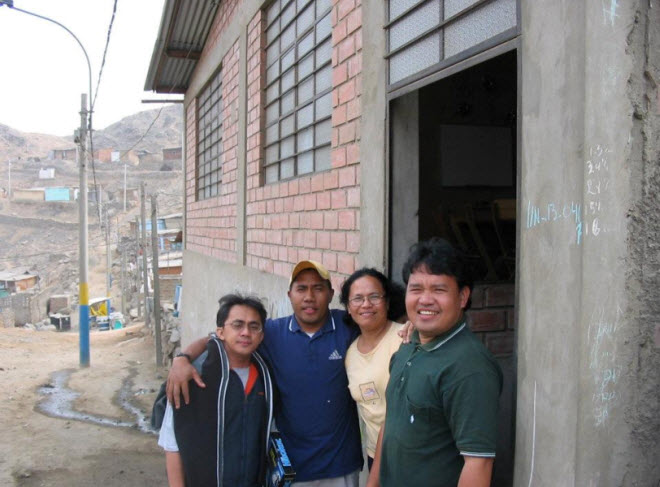
Fr Jovito with Fijian Columban Fr William Lee and Filipino Columban Lay Missionaries Irma Cantago and John Din in Lima, Peru
The Columbans are family-orientated. The fact that I was able to come home for my Dad’s funeral made me even more appreciative of them. I finished my theology in 2005. The following years until my priestly ordination were spent in the Columban parish of Our Lady of Remedies, Malate, Manila. I was ordained deacon there in 2006. It was there that I learned more about poverty in my own country.
One day I asked Fr John Leydon, the parish priest, to allow me to immerse myself for a few days with some sidewalk vendors around the church. I accompanied the family of Ate Evelyn in selling cigarettes, candies, and coffee at nighttime. She was the mother of four children. Her husband was a tricycle driver. Ate Evelyn had to sell from 8pm to 4am the following day. Arriving home she still had to do some household chores before taking a few hours sleep and begin her daily routine as a mother. The first night with them in the street was exciting. However, when I had my sleep from 4am to 8am, I wasn’t able to get up because of dizziness. I could imagine the lack of rest that Ate Evelyn had to go through. Sadly, her earnings sometimes weren’t even enough for her family’s daily needs. It was through her and the other street vendors that the line in the Our Father truly came alive: ‘Give us this day our daily bread!’ They struggled to put food on the table every day. Now, every time I pray those words I remember Ate Evelyn, her family and others who have to struggle every day to find food.
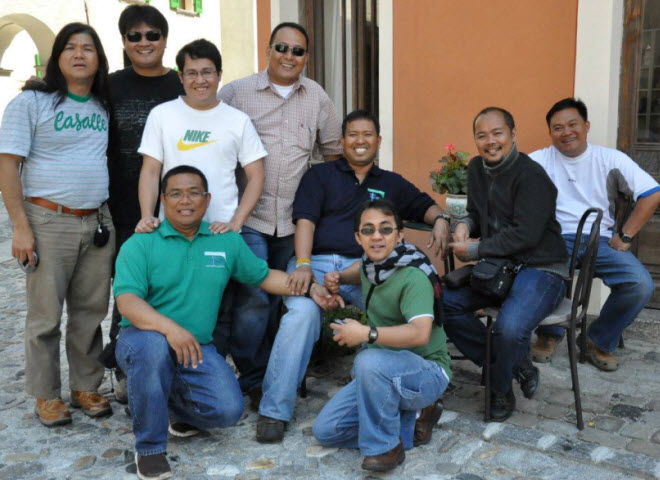
Fr Jovito, kneeling, right, with Filipino Columban priests
I was ordained as a priest on 4 January 2007 at Immaculate Conception Cathedral, Ozamiz City, by Archbishop Jesus A. Dosado CM and worked in Agusan Parish in Cagayan de Oro City for one year with Fr Dick Pankratz, the parish priest. I was back in Peru from 2008 until 2011. I found the Peruvians still warm, friendly and vibrant as they engaged in mission with sincerity, dedication, and profound faith. I surely experienced the highs and lows in mission life in Peru. However, I left there with so much gratitude in my heart, as expressed wonderfully in the famous line from a Spanish song: ‘Gracias a la vida que me ha dado tanto’ (Thanks for the life, which has given me so much!).
Being into different places broadened my perspective of ‘me and others’. I become more appreciative of my own culture as I learned to be more accepting of others. A common thing among Columbans is that we work with the underprivileged to somehow bring to them the Christ that each one knows; and much of what I know of Christ has been through my dealings with the people. A give-and-take process, indeed.
Vocation Director
Now I am working with the Vocation Ministry in the Philippines since June 2012. It is challenging as I feel like a fisherman without knowing where to fish. I have to depend on the previous coordinators’ insights. I try to listen to their experiences and at the same time evaluate them from my own experience. The interesting part of the job is that it reorients me to my own culture as I go to parts of the Philippines I’ve never been before. I am learning to appreciate the diversity of Filipino dialects and languages, and learning more deeply the struggles of the people, particularly of the ‘Ate Evelyns’ in my country. I am glad of the opportunities to talk with groups about the Columbans and our missions. I have become hopeful for there are young men who inquire about the possibility of joining us. As they express their interest in what makes up their lives, I am reminded of my own vocation story.
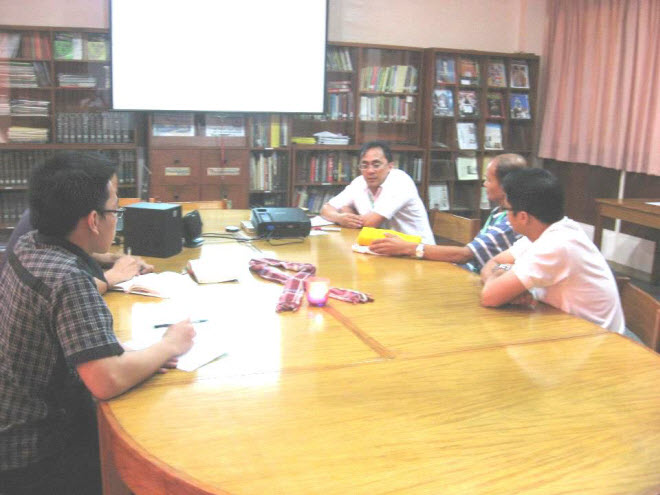
Fr Jovito, center, at a meeting in St Colubman’s, Singalong St, Manila
Now more than ever I find the prayer of Fr Des Hartford even more appealing. I pray for those two gifts especially as a vocation director. The gift of the Spirit of Discernment: to help each inquirer listen to and respond to his own calling. And the gift of the Spirit of Mission: submission to the work itself.
I see my role the way I see mission. This is not my mission but God’s mission, one that is full of frustrations for it is bound by its limitations. But it is also filled with joy for it provides me with the opportunity to meet people from all walks of life whose faith is, at times, stronger than mine. I believe that with the two beautiful gifts I’m praying for, I am also growing in faith and trust in the One who calls.
Hiking home during the ‘Hunger Season’
By Mercy Gawason
My name is Mercy Gawason. I grew up in the mountainous Zamboanga peninsula of northwest Mindanao in the Philippines which is the homeland of the Subanen people. My parents are farmers. My older sister Marilyn and older brother Rolly, are married and are also farmers. My three younger brothers Arnolfo, Jeyar, and Jomar are still at school.

Recently our Subanen Crafts Project acquired a small point-and-shoot camera. With this I can now take you on a photo journey up the trails and rivers to my mountain home, and then, through my pictures, I can more easily explain how the Subanen Crafts Project has helped my family and our farm.
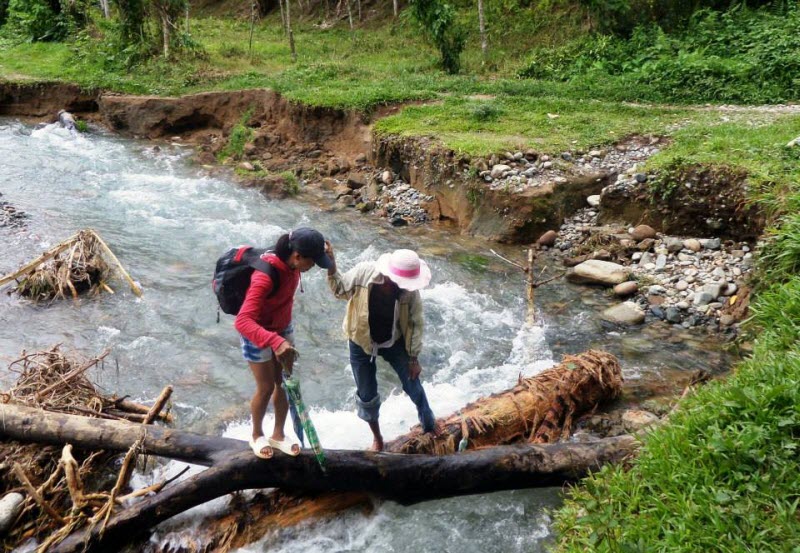
My mother, Lita, my brother, Arnolfo, my sister, Marilyn, and her daughter, Crezlen, joined me on the hike to our home which is about 12 kilometers from the nearest town, Midsalip. We carried heavy bags of food and rice that I had bought in Midsalip. It is the month of May and we are in what people here call ‘ting gutum’ or ‘hunger season’.
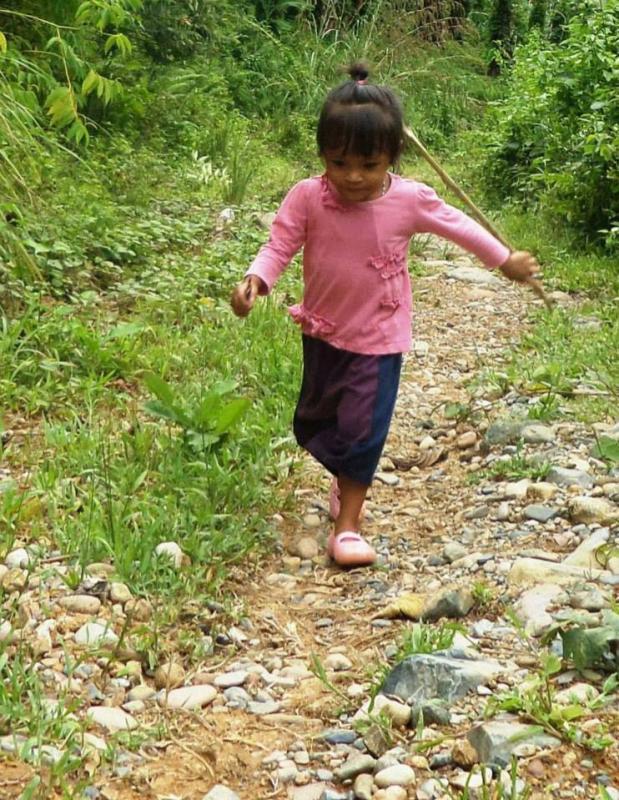
The ‘hunger season’ can last five to six months. It begins when a farming family like ours has eaten the last of our harvested rice and corn and ends with our next harvest. I have a steady income and so I can keep my family supplied with food during the ‘hunger season’.

While we carried the food, little two-year-old Crezlen confidently strode beside us with her walking stick. Even at two years of age Subanen children are seasoned hikers. Along the way we had to carefully cross a river over slippery logs. Luckily, the river was not in flood; then crossing it would be impossible. After many hours of hiking we finally arrived home in the late afternoon.
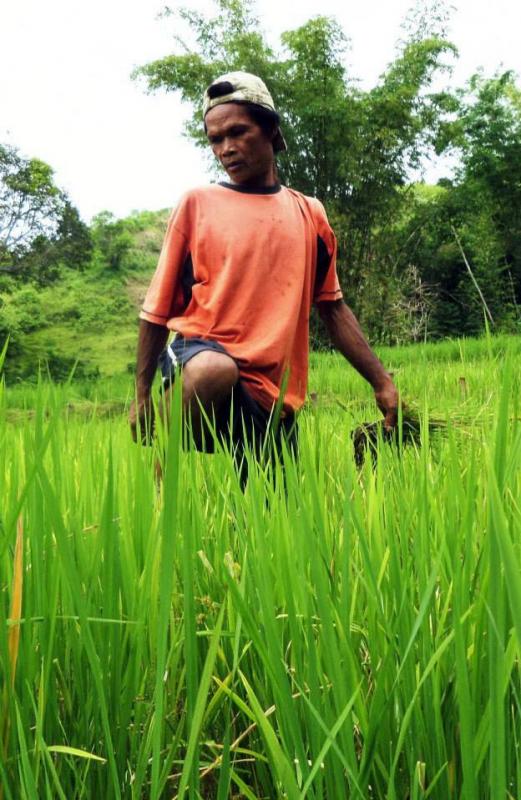 The next day was the beginning of the plowing season for corn. I accompanied my brother Jeyar to our cornfield. When Jeyar is not in school he helps my father on the farm. He skillfully guided our carabao (water buffalo) and plow around the coconut trees. My father and Jeyar will need to plow and re-plow our cornfield for two weeks before it is fully ready for planting. Our family is lucky to still have a carabao. Many Subanen families, especially during the ‘hunger season’, have to sell their farm animals to feed their families or to pay for health emergencies. A serious infection requires antibiotics that cost the same as a large pig. Two days in hospital cost the same as a carabao. Thanks to my work with the Craft Project I have enough income to save for such emergencies.
The next day was the beginning of the plowing season for corn. I accompanied my brother Jeyar to our cornfield. When Jeyar is not in school he helps my father on the farm. He skillfully guided our carabao (water buffalo) and plow around the coconut trees. My father and Jeyar will need to plow and re-plow our cornfield for two weeks before it is fully ready for planting. Our family is lucky to still have a carabao. Many Subanen families, especially during the ‘hunger season’, have to sell their farm animals to feed their families or to pay for health emergencies. A serious infection requires antibiotics that cost the same as a large pig. Two days in hospital cost the same as a carabao. Thanks to my work with the Craft Project I have enough income to save for such emergencies.
The following day I joined my father, Robin, in the small rice field that we tend for the owner. My family does all the plowing, planting, weeding, and fertilizing for a share of the harvest. Last year the harvest was poor. After subtracting our expenses, our share was only four sacks of rice.
A sack of rice is PHP750 or US$17.00. Four months of toil in the rice field netted us only PHP1,270 (US$7). We hope that this year’s harvest will be better.
Before leaving home I asked my sister Marilyn to take a photo of me with my three younger brothers and my parents. My two youngest brothers, Jomar and Jeyar, are in high school. High school in the Philippines is free but books, supplies, and uniforms plus the many fees for class projects are too costly for most Subanen families. I send money home so my brothers can stay in high school. My brother Arnolfo is in college studying to be a teacher. I am also helping pay for his tuition and expenses. It is difficult for Subanen youth to stay in school. I am happy to be able to help my bothers’ education. Education will give them more options in life. After taking this last photo I said goodbye to my family and hiked back to Midsalip to catch a bus for Ozamiz.
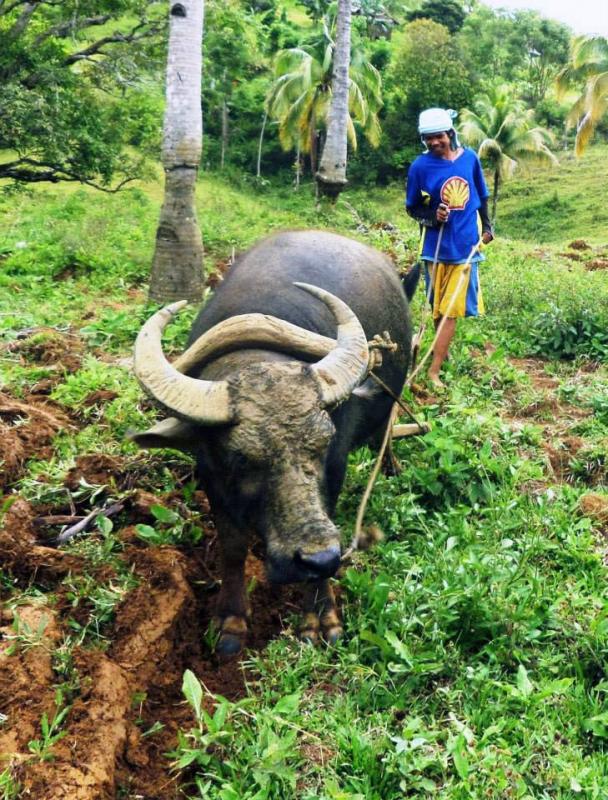 I am now back in Ozamiz with my co-workers in Subanen Crafts. They too are helping their families survive the ‘hunger season’. We are making Christmas cards. Christmas is six months away but we have to start production early because each card has to be carefully and slowly inlayed with colored paper. This year our cards celebrate the coming of Jesus as God’s gift to all creation. By crafting these cards I am grateful that I can help my family and take care of the little gift of creation that is our farm.
I am now back in Ozamiz with my co-workers in Subanen Crafts. They too are helping their families survive the ‘hunger season’. We are making Christmas cards. Christmas is six months away but we have to start production early because each card has to be carefully and slowly inlayed with colored paper. This year our cards celebrate the coming of Jesus as God’s gift to all creation. By crafting these cards I am grateful that I can help my family and take care of the little gift of creation that is our farm.
Mercy Gawason joined the Subanen Crafts Project in 2004, a project started by Columban Fr Vincent Busch to help Subanen women support their families by producing and marketing handcrafted items that celebrate God’s Creation. The Crafts Project also sponsored Mercy’s college education and she graduated with an Associate Degree in Office Administration in 2010. Mercy is now the Operations Manager of Subanen Crafts in Ozamiz City.
It’s the small things that matter
By Fr G. Chris Saenz
The author is from the USA and was ordained in 2000. Part of his preparation for the priesthood was in the Philippines. He is currently Rector of the Latin America Formation Program of the Columbans in Chile and Peru and lives in Santiago, Chile.
The ‘small things”, as St Thérèse, the Little Flower would say, are an important aspect of spirituality and mission. But don’t get a romantic notion of what that means or how it looks. Often the small things can be a nuisance, an inconvenience and a pain in the neck. That is the moment we have to be alert to what God is teaching us through these small things. I learned such some years ago when I worked in southern Chile.

Fr Chris and friends on a pilgrimage in honor of St Teresa of the Andes
I was living in the rural countryside populated by the Mapuche, who are indigenous to parts of Chile and Argentina. One day, after visitations and meetings, I arrived home late, tired and hungry. With a cup of tea I sat down to watch the local news. Suddenly there was a knock on my door. What! Who can that be! My mind raced thus, completely upset by the intrusion. I opened the door to see Kata, a Columban lay missionary from Fiji who lived next door. ‘Sorry to disturb you’, she apologized, probably seeing discontent on my face. ‘There is a woman here to see you. She’s in our house.’ I told the Kata that I’d be there. With a huff and a puff I changed my clothes and went over. It was unusual for someone, especially a woman, to be out at this hour. I was surprised to discover that there were two women waiting for me, one being Maria who lived quite far away. They greeted me.
We from North America and Europe value being direct,‘getting to the point’,-so as notto ‘waste time’. However, in Chilebeing direct is not a value. It is considered rude. The women began with the usual general questions of how was I doing, my family, my health, etc. Having been in Chile for several years I was accustomed to this, but that night it was torture. I begrudgingly participated. After about 30 minutes the women finally got to the point. Maria explained that after shopping in the large city, two hours away by bus, they had arrived back here late and she had missed the last bus to her area.
Maria had told her companion, ‘The bus goes by Father’s house. He is my friend and will help us’. ‘Darn!’ I thought. ‘They want me to take them home! More than an hour of wasted time!’ Yet, I said, ‘No problem’.
|
|
After I took the first woman home, I drove to Maria’s house, engaging in small talk. When we arrived it was completely dark except for the lights of the house. When I parked the truck in front of the house Maria looked at me and said in a cautious tone, ‘Father, please stay in the truck while I get down first’. I thought this a strange request seeing that I had been to her house many times before.
I looked at the doorway and saw a figure standing there, her husband. The inside lights highlighted his aggressive stance. It was then that I realized the complexity of Maria’s situation of which I was completely ignorant due to my being bothered by her small request for a lift home.
The rural culture is very macho. Maria was a married woman who hadn’t arrived home on the last bus. Her husband’s mind would be filled with thoughts of what she might have been doing at such a late hour. This was further complicated by the fact that Maria, a poor woman, could not hire a taxi from the small town because the distance and hour would mean a large fare. Furthermore, even if a good Samaritan were to take her home, all the drivers were men. ‘Who could this strange man be bringing Maria home so late?’, her husband would think. Maria was caught in a no-win situation until she saw her only way out. -Possibly the only man who could save her in this tense situation open to misunderstanding wasthe priest. Her friendship with me could make a difference.
Maria began conversing with her husband. Things sounded and looked tense. Eventually, I stepped out of the truck and shouted, ‘Don José!’ The aggressive man turned towards mewith apuzzled look. ‘Don José, I repeated, ‘How are you doing? How are crops this year?’ Ironically, I was using the Chilean non-direct small talk to my advantage. When José recognized my voicehis posture relaxed. ‘Father, is that you?’ he said. ‘Yes’, I responded. ‘I was out late and ran into your wife who was waiting for the bus. Since the bus already left I decided to bring her home.’ José looked at his wife, than at me and said, ‘Father come in, we’ll drink some tea and have something to eat’. Food is a good sign that all will be fine.The tense mood was gone. Maria was relieved and thankful. I shared a meal with them and arrived home very late.
Mission is not necessarily about sacraments, the catechism, formation, or about the construction of churches and parish buildings, but more often is about the small things, the daily living with people. I can’t boast of any great building or program in my name during my years in Chile. Yet, I believe my contribution to mission has been the friendships formed and transformed with the people I minister to. That is a small thing that matters.
You may email Father Chris at gchris.saenz@gmail.com
PH21 – Team in Orientation 2013-2014
The three members of PH21, the 21st group of Columban Lay Missionaries from the Philippines began their nine-month orientation program on 3 June. They are staying in St Columban’s Lay Mission Center, 34 Rosario Drive, Cubao, 111 Quezon City. Here are profiles of the three.
PH21 (L to R): Jenanydel, Luda and Ivy May
 Jenanydel Nola, 24, from the T’Boli Tribe of Maitum, Sarangani Province. Del, second of eight children, is a graduate in Economics of Notre Dame University of Dadiangas. From June 2010 to March 2012 she worked at St Marcellin Daycare Center, established in their place for the T’bolis through the generosity of her grandfather, Malico Nola. After two years as a day care worker, she was given a new assignment as a self-help facilitator with the tribal women’s group, under the supervision of the Marist Brothers and Sisters (Notre Dame Business Resource Center). Aside from being a teacher and a community facilitator, Del has also worked as a researcher and was appointed Parent Leader of the PantawidPamilyang Pilipino Program in her area.
Jenanydel Nola, 24, from the T’Boli Tribe of Maitum, Sarangani Province. Del, second of eight children, is a graduate in Economics of Notre Dame University of Dadiangas. From June 2010 to March 2012 she worked at St Marcellin Daycare Center, established in their place for the T’bolis through the generosity of her grandfather, Malico Nola. After two years as a day care worker, she was given a new assignment as a self-help facilitator with the tribal women’s group, under the supervision of the Marist Brothers and Sisters (Notre Dame Business Resource Center). Aside from being a teacher and a community facilitator, Del has also worked as a researcher and was appointed Parent Leader of the PantawidPamilyang Pilipino Program in her area.
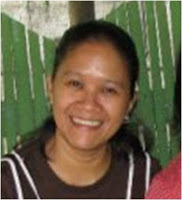 Luda Egbalic, 39, is a former Redemptorist lay missionary. Luda, second of ten children, completed a degree in Bachelor of Science in Education in Bukidnon State University in 1994. Since then she has been independent from her family, working as a public school teacher from 1995 to 1999, then as teacher/academic coordinator from 2000 to 2009 in the Elementary Department of San Isidro College,Malaybalay City. She came to Columban Lay Mission from working with the Cebu Redemptorist Urban Mission Team inBirhensaRegla Parish, Lapu-Lapu City,where she was involved particularly with the Basic Ecclesial Communities and in sectoral organizing.
Luda Egbalic, 39, is a former Redemptorist lay missionary. Luda, second of ten children, completed a degree in Bachelor of Science in Education in Bukidnon State University in 1994. Since then she has been independent from her family, working as a public school teacher from 1995 to 1999, then as teacher/academic coordinator from 2000 to 2009 in the Elementary Department of San Isidro College,Malaybalay City. She came to Columban Lay Mission from working with the Cebu Redemptorist Urban Mission Team inBirhensaRegla Parish, Lapu-Lapu City,where she was involved particularly with the Basic Ecclesial Communities and in sectoral organizing.
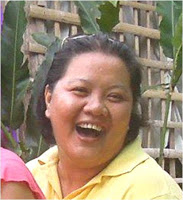 Ivy May Carpio, 36,is from Ipil, ZamboangaSibugay (ZS). Ivy May, the younger of two children, completed a degree in Bachelor of Arts in Interdisciplinary Studies in 1998 in Ateneo de Zamboanga University, Zamboanga City, and in 2004 she earned a degree in Bachelor of Laws from the University of the Visayas, Cebu City. She had her first regular job in the Office of the Provincial Vice Governor detailed at the Regional Trial Court in Ipil, ZS. She later became executive assistant to Board Member Richard B. Rambuyong. Earlier on she used to be a volunteer in the Campus Ministry of Marian College, Ipil, ZS. She came to Columban Lay Mission from working as Clerk of Court II at the Municipal Trial Court in Alicia, ZS.
Ivy May Carpio, 36,is from Ipil, ZamboangaSibugay (ZS). Ivy May, the younger of two children, completed a degree in Bachelor of Arts in Interdisciplinary Studies in 1998 in Ateneo de Zamboanga University, Zamboanga City, and in 2004 she earned a degree in Bachelor of Laws from the University of the Visayas, Cebu City. She had her first regular job in the Office of the Provincial Vice Governor detailed at the Regional Trial Court in Ipil, ZS. She later became executive assistant to Board Member Richard B. Rambuyong. Earlier on she used to be a volunteer in the Campus Ministry of Marian College, Ipil, ZS. She came to Columban Lay Mission from working as Clerk of Court II at the Municipal Trial Court in Alicia, ZS.
If interested in being a Columban Lay Missionary you may mail Mr John Din at the postal address above, or email him at clmssc_phil@yahoo.com . The phone numbers are 02-722 5732 and 02-401 9772. The fax number is 02-412 3211.



